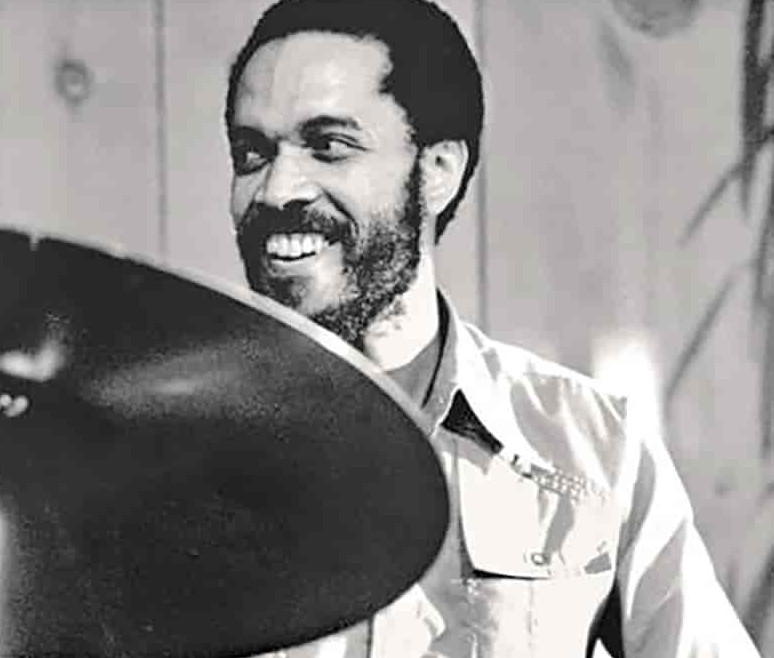Billy Higgins was born 80 years ago today in Los Angeles. Guided by his mother, Higgins began drumming at the age of five and knew by eight that he was going to make it his profession. “Smilin’ Billy,” as Jimmy Heath named him on a tune recorded in 1973 for the album Love and Understanding, played in r&b bands in the early fifties, including a local group led by Arthur Wright that included his boyhood friend Don Cherry playing piano. Bebop was the guiding force in these young players lives, and Billy’s models included Jo Jones, Sid Catlett, Kenny Clarke, Art Blakey, and Max Roach.
In 1956, Higgins found himself at the center of cutting edge jazz action in Los Angeles when he joined Cherry (now playing trumpet) and saxophonist James Clay in the Jazz Messiahs, a combo that played intermissions at the Haig, the LA club identified with Gerry Mulligan and Chet Baker. He also gigged around town with the singer Ernie Andrews and with saxophone masters Dexter Gordon, Teddy Edwards and Sonny Criss. In 1957, he and Clay appeared on bassist Red Mitchell’s Contemporary album, Presenting Red Mitchell. It was Billy’s recording debut, and in Nat Hentoff’s liner note essay, Mitchell said, “Billy Higgins, I think, is destined to be recognized as one of the great drummers in the country.” He praised him for his “fiery swing,” and noted qualities that would only grow over the years. “He has great imagination and is a wonderful group player.”
Video: https://www.youtube.com/watch?v=kHIvGMIUUrk
In August 1956, Higgins and Cherry met Ornette Coleman at a record store in Watts and invited him to play rehearsals with the Messiahs. Ornette was already a controversial figure who’d been rejected from several jam session bandstands around LA , but it was in this sympathetic company that his daring new music began to take shape. Higgins appeared on Coleman’s debut release for Contemporary, Somethin’ Else, in 1958, and the following year on the saxophonist’s groundbreaking Atlantic albums, The Shape of Jazz to Come and Change of the Century. He attended the School of Jazz in Lenox, Massachusetts, with Ornette and Cherry and bassist Charlie Haden in the summer of ’59, and played the quartet’s legendary engagement at the Five Spot in New York that fall. Higgins returned to California the following year where he appeared with Thelonious Monk at the Blackhawk in San Francisco and with John Coltrane at the Monterey Jazz Festival. He was back in the city by 1963 where he and Cherry joined Sonny Rollins’s Quartet for the Our Man in Jazz sessions at the Village Gate.

Higgins played on over 700 recordings in his 44-year career (1957-2001), but led only a handful. He’s invariably included in the short list of the greatest drummers in jazz history, and given the uniform excellence of virtually everything he appeared on, I’d nominate him for the top prize in quality control. I first saw Higgins in the mid-seventies at Boomer’s in New York with the quartet seen in the video below: Cedar Walton, Clifford Jordan, and Sam Jones. Higgins played on the premier recording of Walton’s Eastern Rebellion in 1975, and he maintained a long association with the pianist thereafter. Seeing them at Boomer’s was an experience that made me feel like I was sitting at the jazz center of the universe. The last time I saw “Master Higgins,” as Charles Lloyd called him, was at the Marciac Festival in France in 1998. He died three years later at the age of 64. I wsan’t surprised today to see several Facebook comments reading, “He’s my all-time favorite!”
